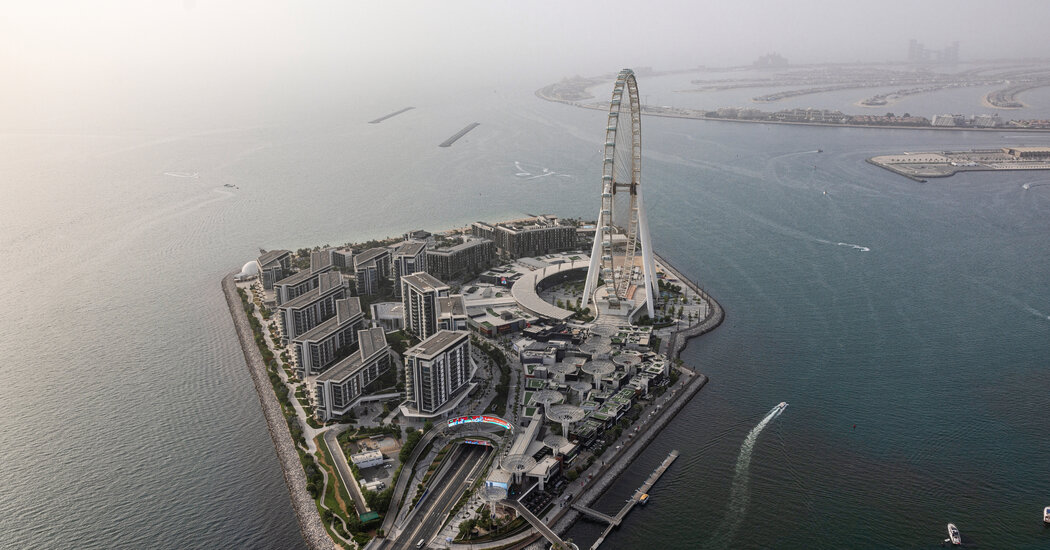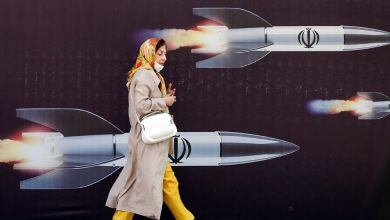
Dubai’s Costly Water World
For a desert city, Dubai appears like a water wonderland. Visitors can scuba dive in the world’s deepest pool or ski inside a mega mall where penguins play in freshly made snow. A fountain — billed as the world’s largest — sprays more than 22,000 gallons of water into the air, synchronized to music from surrounding speakers.
But to maintain its opulence, the city relies on fresh water it doesn’t have. So it turns to the sea, using energy-intensive desalination technologies to help hydrate a rapidly growing metropolis.
All of this comes at a cost. Experts say Dubai’s reliance on desalination is damaging the Persian Gulf, producing a brackish waste known as brine which, along with chemicals used during desalination processing, increases salinity in the Gulf. It also raises coastal water temperatures and harms biodiversity, fisheries and coastal communities.
The Gulf is also being stressed by climate change and efforts to construct Dubai’s multibillion-dollar islands using land reclamation. The beachfront real estate on offer includes a $34 million private island shaped like a sea horse, situated in the artificial archipelago.

People take in the show at Dubai Fountain on the artificial Burj Lake.Credit…Katarina Premfors for The New York Times
If no immediate action is taken to counter the harm, desalination, in combination with climate change, will increase the Gulf’s coastal waters temperature by at least five degrees Fahrenheit across more than 50 percent of the area by 2050, according to a 2021 study published in the Marine Pollution Bulletin on ScienceDirect, a site for peer-reviewed papers.
Dubai, the most populous city in the United Arab Emirates, has taken steps to address the damage through environmental initiatives and new technology, but pressure is building to do more. Later this month, the city will host the United Nations global climate summit, known as COP28, a notion that has already riled tension because of fossil fuel investments by the U.A.E. and other participating countries.
Beyond powering Dubai’s flashy recreational features, water is essential to sustaining life, and desalination provides drinking water to a thirsty city. The Dubai Electricity and Water Authority supplies water to more than 3.6 million residents along with the city’s active daytime population of more than 4.7 million visitors, according to a 2022 sustainability report. By 2040, the utility expects these numbers to grow, increasing the demand for clean water.
The city desalinated approximately 163.6 billion gallons of water last year, according to the sustainability report. For each gallon of desalinated water produced in the Gulf, an average of a gallon and a half of brine is released into the ocean.
In Dubai, the Jebel Ali Power and Desalination Complex — the largest facility of its kind in the world — pipes water from the sea, sending it through a series of treatment phases, then to the city as drinkable water. But Jebel Ali’s 43 desalination plants are powered by fossil fuels. The U.A.E. produced more than 200 million tons of carbon in 2022, among the highest emissions per capita worldwide.
Seawater desalination has been a lifeline in the United Arab Emirates for almost 50 years, but other coastal regions, like Carlsbad, Calif., have recently adopted the technology in the face of severe drought. Florida is a national leader in desalination, and farther inland, Arizona is considering piping desalinated water from Mexico.
Desalination efforts have long been used in other Gulf countries as well, including Bahrain, Kuwait, Saudi Arabia and Qatar. Unlike its oil-rich neighbors, Dubai has an economy based primarily on tourism, real estate and aviation, though its short-lived oil boom of the 1960s and ’70s provided the financial foundation for the city’s infrastructure of architectural grandness.
“It’s a brand,” said Khaled Alawadi, associate professor of sustainable urbanism at Khalifa University in Abu Dhabi. “Any tourist destination, especially if you have potential competition from the region, likes to dominate.”
At Deep Dive Dubai, the equivalent of six Olympic-size swimming pools of water fills an underwater city shaped like a giant oyster, inspired by the emirate’s pearl-diving heritage.
The Burj Khalifa, the world’s tallest building, developed by Emaar and designed by Adrian Smith, uses an average of 250,000 gallons of water daily and requires a peak cooling capacity equivalent to roughly 10,000 tons of melted ice. At the foot of the building, the 30-acre Burj Lake and its five dancing fountains use a wastewater reclamation system by Hitachi that reuses the Burj Khalifa’s sewage water to replace fountain water lost each day.
The construction of Dubai’s artificial islands also strains the Gulf’s water resources. One study found that the average water temperature around Palm Jumeirah island, designed by HHCP Architects, increased by roughly 13 degrees over 19 years. Another study cited land reclamation, along with brine and industrial waste, as a cause of the excessive growth of microscopic algae in the Persian Gulf, known as algae blooms or red tides. Some of these harmful blooms have forced desalination plants to reduce or shut down operations.
“Developing close to the water is much more preferred than developing in the desert landscape, and you are increasing the coastline,” Dr. Alawadi said.
The state-run utility, Mr. Smith and HHCP Architects declined to comment for this article.
Dubai has announced environmental initiatives to address its enormous consumption of resources, including an effort to reduce energy and water demand by 30 percent by 2030 and obtain 100 percent of its power generation from renewable energy sources by 2050. The country has even turned to the sky as an alternative water source, hiring scientists to chemically stimulate clouds to produce rainfall (though there’s little agreement this process actually works) and encouraging hotels in Dubai to make their own water through atmospheric harvesting.
Faisal al-Marzooqi, an associate professor at Khalifa University who researches water desalination in the United Arab Emirates, said he had pushed government officials to stop facilities from using potable water for functions that do not involve drinking, such as metal manufacturing facilities and water parks.
“During a time when water is really valuable, there could be better ways to do things like recreational activities,” he said.
He added that rising salinity levels in the Gulf were dangerous because the water was already hypersaline, and adding more salt threatened the Gulf’s biodiversity.
Global seawater salinity is typically 3.5 to 4.5 percent; the Persian Gulf comes in at the latter end, making it more vulnerable to brine. About 70 percent of the Gulf’s coral reefs have disappeared, with 21 species of coral-dependent fish at elevated risk of extinction. These shifts have resulted in a regional loss of $94 billion a year for tourism, aquaculture and fisheries, according to a study published in 2021 in the Marine Pollution Bulletin, a scholarly journal.
“This is a really big problem,” Dr. al-Marzooqi said.
Sea grass meadows and mangroves in the area are also struggling. Such ecosystems are important nursing grounds for commercially valuable species like pearl oysters; they also help stabilize wave rhythms and erosional forces and can absorb large quantities of greenhouse gas from the atmosphere. Their decline has contributed to an oceanic desert devoid of the usual biodiversity that is found in the Arabian Sea and the Persian Gulf — the largest so-called dead zone in the world.
Since the 1970s, dead zones have proliferated across the globe, and include one in the Baltic Sea three times the area of Maryland.
“We have our own in the Gulf of Mexico, where all the water going down the Mississippi deoxygenates and everything dies,” said Bruce Logan, director of Pennsylvania State University’s Institute of Energy and the Environment.
But Dubai is making progress. In 2021, the city required that all new desalination projects be built using what is widely considered the most efficient and eco-friendly desalination technology available: reverse osmosis. Most of the country’s desalination plants, however, still use an older technology called multistage flash distillation.
Unlike reverse osmosis, which removes salt and other contaminants by pushing water through a semipermeable membrane, multistage flash distillation relies on heat. Decades ago, when the U.A.E. began exploring desalination, the technology could better handle the Gulf’s high salinity, though reverse osmosis can now do the same. And although both technologies create brine, the byproduct of multistage flash distillation is far hotter, further disrupting the ecosystem.
The utility’s new Hassyan Power Plant in Dubai will use reverse osmosis desalination and has operated for more than a year on natural gas instead of coal. The $3.4 billion project is expected to generate more than 140 million gallons of water a day.
The utility has begun researching sustainable options to manage and recycle brine using Zero Liquid Discharge and membrane distillation, technologies that experts hope will treat saline water and wastewater. Techniques that address the problem at scale, however, have yet to be applied, though solutions are being researched worldwide.
Despite the efforts, Dubai faces criticism. “I don’t see a lot of initiatives, to be honest,” Dr. al-Marzooqi said. “I feel the focus is more on renewable energy powering the systems, but there’s almost zero talk about brine.”




